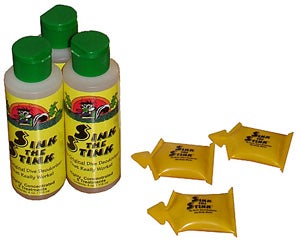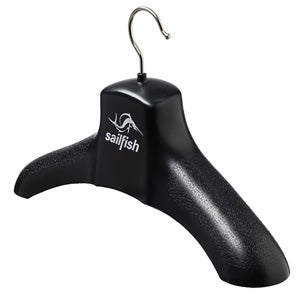Winter Storage Tips For Neoprene PWC Gear
Clean, dry, and repair now to avoid the rips, tears and stink next season
We’ve written multiple times about how to care for your personal watercraft when the season winds down and winter’s chill is just around the corner, but equal attention needs to be paid to your pricey PWC riding gear. Stuff like wetsuits, PFDs, booties, and gloves. All of it needs to be cared for if you want it to last multiple seasons and function properly.
In short, don’t just stuff your gear in the garage and discover its condition in the spring, only to find you need to replace it. Take a few minutes now…and save your time and money later.
Scrub-a-Dub
 Properly cleaning and deodorizing your wetsuit can add years to its life.
Properly cleaning and deodorizing your wetsuit can add years to its life.Neoprene is the core material of the vast majority of our riding gear. It’s the material of choice for wetsuits, gloves, booties, even hidden liners inside those cool board shorts. It’s tough, but requires some care to make sure it lasts.
For starters, that soft, supple, comfortable neoprene will stiffen with age and neglect. The stiffer it gets, the more prone it is to cracking and tearing. Neoprene will also shrink slightly with degradation. Some of this is unavoidable, but much of the process can be slowed by how you care for your gear.
Start off your winter storage by washing your suit, as well as all your other neo gear, in the bathtub in cool-to-warm (but not hot) water. Use a wetsuit-specific shampoo, or mild soap like Woolite, and let the stuff do its job, getting rid of the smells, body oils, dirt, and other nastiness (some of you know what you do in there) that has collected over the season. Even minerals in lake or ocean water can lead to neoprene degradation. Swish everything around, work the suds into any trouble spots, then let it soak for about 20 minutes. Particularly nasty smells can be treated with a product like Sink the Stink. It actually uses safe, non-toxic, odor-destroying bacteria to consume organic matter like algae, bacteria, pollution, waste matter and urine. In return, these bacteria produce only carbon dioxide and water. Sounds like a science experiment, but it works.
Air it Out
 Called Hangair, this hanger has a built-in fan to speed up the drying process.
Called Hangair, this hanger has a built-in fan to speed up the drying process. Neoprene-specific glue can be used to repair any holes in your wetsuit.
Neoprene-specific glue can be used to repair any holes in your wetsuit.When the shampoo or anti-stink potion has done its job, rinse and rinse again with cold water. Get all the soap residue out of the gear, then hang it somewhere in the shade to thoroughly dry.
Don’t be tempted to use the dryer! Likewise, avoid a heater or hair dryer. Heat leads to stiffening and cracking. Just let all your neo gear dry naturally, using a thick, plastic hanger for your wetsuit and PFD that won’t rust or put undue stress on the material. Open all zippers, ties and closures to maximize air circulation.
Have a small hole or tear that’s been bugging you? Now’s the time to take care of it. Get some neoprene-specific glue at a PWC, dive, or watersports shop, and follow the directions to repair the problem. Glue will close up the tear, and keep it from getting any larger.
Have a zipper that’s causing problems? Several products are available to lubricate the plastic zipper teeth used in most suits, as well as prevent rust and corrosion on metal zippers. You can also try paraffin or beeswax to keep things running smoothly.
Stow it…With Care
 Store your wetsuit on a wide, plastic hanger, lay it flat or roll it up.
Store your wetsuit on a wide, plastic hanger, lay it flat or roll it up.Once everything is clean, dry, and repaired, store it away carefully for the winter. Avoid folding wetsuits; folding can cause creases that will permanently scar your suit if left for an extended period. Ideally, lay the suit flat. As that’s not always the most practical, hang the suit (again on a wide, plastic hanger), or even roll it.
Avoid hanging it in the garage. Exhaust emissions are another factor that causes neoprene degradation. Instead, keep dry gear in a closet, Rubbermaid-style tub, or anywhere else it will stay dry and protected.
Sure, it’s a little more work now. But you — and your friends — will thank us later.
Related Reading
Personal Watercraft Winter Storage Tips
How To Properly Store Your PWC Fuel for Winter
How to Repair Personal Watercraft Hull Damage
Get PersonalWatercraft.com in your Inbox!
Like PersonalWatercraft.com on Facebook
Comments
Most Popular

2025 Yamaha JetBlaster PRO 2-Up Review

2024 Kawasaki Jet Ski STX 160X Review

Remembering the Sea-Doo XP

Whatever Happened to the Wetbike?

2025 Yamaha JetBlaster Review













 Your Privacy Choices
Your Privacy Choices